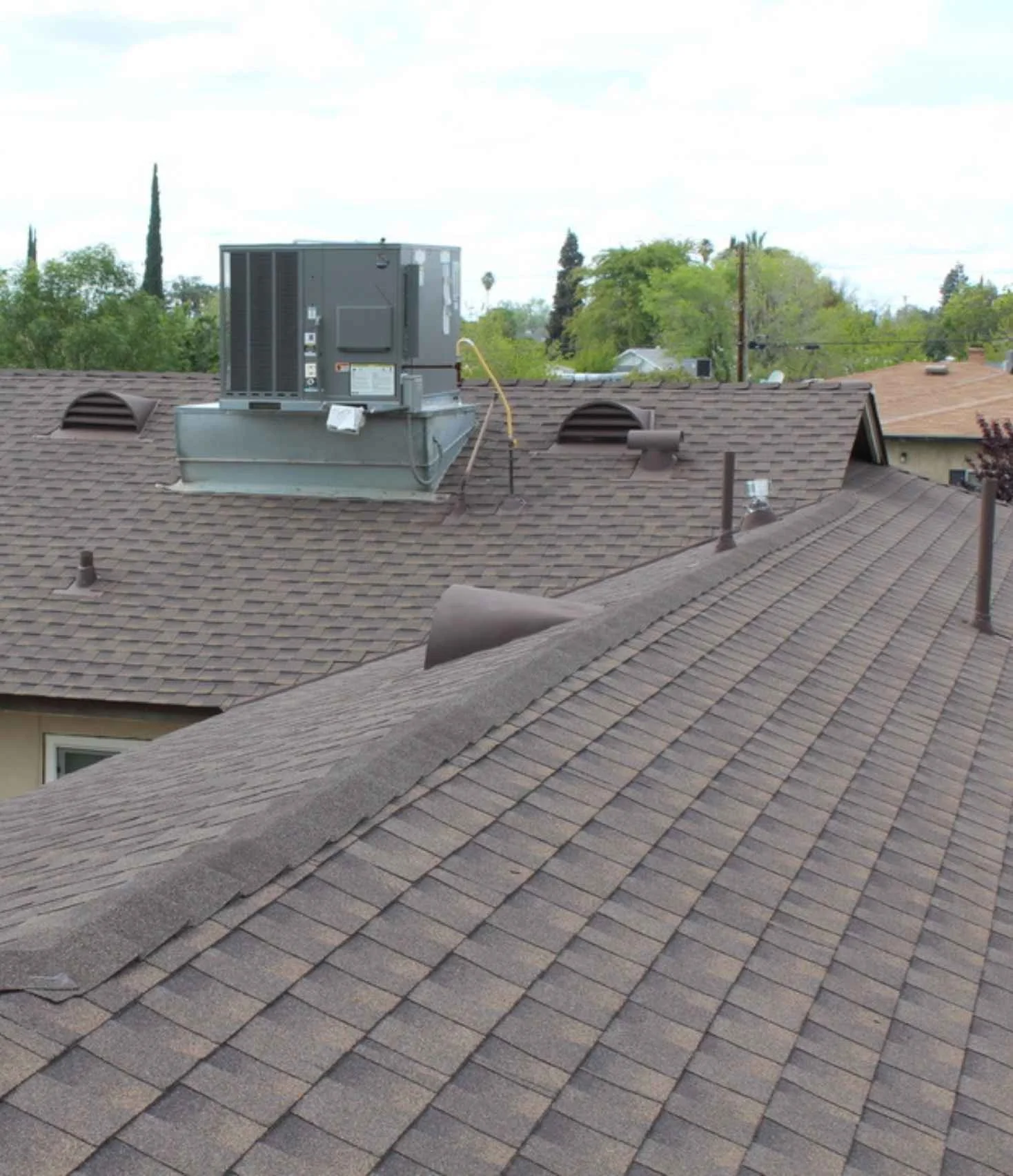Roofs don’t wait for the right time. When leaks hit, so does the stress of paying for it.
With material costs rising across Kern County, the question is simple: how do most people actually afford a new roof?
Here are eight paths homeowners in Bakersfield and across Kern County use to cover the cost without sacrificing lifestyle.
1. Contractor Financing & Payment Plans
Most roofers now partner with lenders or offer in-house financing. Instead of paying all at once, the bill spreads out over months or years.
- Why it works: quick approvals, no large down payment.
- Watch for: higher interest rates, limited terms.
(In Bakersfield, very few roofing companies offer in-house 5–15 year plans)
2. Home Equity Loans
A classic option. Use equity built in your home to borrow a lump sum at a fixed rate.
- Why it works: lower rates than credit cards, predictable payments.
- Watch for: closing costs, risk to your home if you default. Must have significant equity.
3. Home Equity Line of Credit (HELOC)
Works like a credit card backed by your house. Borrow only what’s needed, pay interest on what you draw.
- Why it works: flexibility if costs change mid-project.
- Watch for: variable rates that climb, annual fees. HELOCs come with an adjustable rate mortgage.
4. Cash-Out Refinances
Some homeowners roll the roof into a refinance. Cash-out means replacing your mortgage with a new one and pulling equity funds out to pay for improvements.
- Why it works: one monthly payment, possibly lower interest than personal loans.
- Watch for: restarting the mortgage clock, closing costs, qualifying hurdles.
5. Renovation & Rehab Loans (Buying or Refinancing)
Not every homeowner wants to pull cash outright. Renovation loans allow you to fund a new roof by rolling the cost into your mortgage or by taking a separate lien.
Two main setups:
1. Single, wrapped mortgage
- Programs like FHA 203(k), Fannie Mae HomeStyle, or Freddie Mac CHOICERenovation® combine the home loan + renovation budget into one mortgage and one monthly payment.
- Funds for the roof are escrowed and released as work is completed.
2. Second lien renovation loan
- Some wholesale lenders (like GoTPO) and credit unions offer rehab loans as a second mortgage on top of your primary.
- This creates a second monthly payment, but avoids resetting your main mortgage.
- Often used when refinancing isn’t ideal but cash is still needed for repairs
Why it works:
- Rates tied to mortgage products, not personal loan rates.
- Lets you finance a roof as part of a larger home purchase or refinance.
- Second-lien options give flexibility without disturbing the first mortgage.
What to watch for:
- Paperwork is heavier (contractor bids, after-renovation appraisals).
- Funds are tightly controlled, released in stages.
- Second-lien payments add another line item to your budget.
This path works best for homeowners buying a fixer or those refinancing who want to add the roof into the deal.
Second-lien rehab loans are also a fit when the main mortgage is locked at a low rate you don’t want to lose.
6. Pulling From Retirement Accounts (401k or IRA)
Old-school but still common. Some tap into a 401k loan or early withdrawal to cover a roof.
- Why it works: fast access to larger sums.
- Watch for: taxes, penalties, and impact on retirement savings.
7. GoGreen Financing (For California Homeowners)
California offers GoGreen Home Financing, designed for upgrades like energy-efficient cool roofs.
- Why it works: below-market rates, terms up to 15 years, $0 down for qualified property owners.
- Watch for: credit score requirements, program paperwork.
8. Saving & Paying Out of Pocket
The old-fashioned route, save until you can pay cash.
- Why it works: no interest, no debt, clean slate.
- Watch for: takes discipline and time. In the meantime, leaks can cause more damage and drive costs higher.
The Realty
Most people don’t pay cash upfront for a roof. They piece it together through financing, tapping equity, or pulling from savings.
For California homeowners, programs like GoGreen Financing and smart timing can make the difference between stress and control.
Takeaway: plan before the leak gets worse. Acting early keeps costs down and options open.

Drip edge

Roof flashing
Sealants
Foot traffic and warranties
During a re-roof, workers are moving around constantly, and sometimes that leads to accidental damage. Keep an eye out for excessive footprints, leftover debris, or any other signs of carelessness. A good roofing crew will clean up daily and notify you immediately if something gets damaged.
Now, let’s talk about warranties...
Even with the best tips, nothing beats the peace of mind a solid warranty provides.
Be sure to understand what’s included—and more importantly, what’s not. Ask specific questions about exclusions and whether regular maintenance is required to keep the warranty valid.
Keep in mind that craftsmanship and manufacturer warranties are separate. The manufacturer warranty covers your shingles, while the craftsmanship warranty comes from the contractor.
If you’ve chosen a specific shingle, make sure your contractor is a certified installer for that brand. Any reputable roofing company should back their work with at least a 10-year warranty.
Roof replacements are a big investment, and mistakes can happen during the process. A good warranty ensures your investment is protected and saves you from unexpected costs later.
If you’re planning a roofing project, these tips will help you feel more confident managing the process. Got questions or ready to book a consultation? Reach out to us—we’re happy to inspect your roof, answer your questions, and provide a detailed, no-hidden-cost quote.

Found this article helpful? Share it with your network! Knowledge is better when it’s shared, especially when it helps others make informed decisions.



